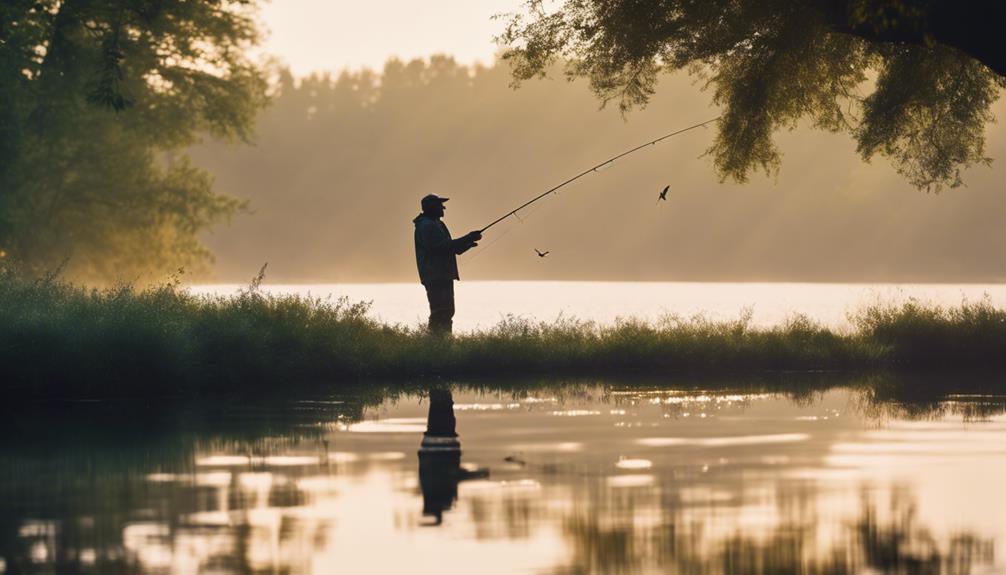Fishing is not only a relaxing pastime but also an exciting adventure that connects people with nature. Whether you are a novice angler or someone looking to refine your skills, knowing how to catch a fish effectively can enhance your fishing experience. This guide will explore various techniques, gear, and tips to help you become a successful fisherman.
Understanding Fishing Basics: What You Need to Know
Before diving into the specifics of how to catch a fish, it’s essential to understand the basics of fishing. Fishing involves using a rod, reel, and bait to lure fish into biting. Different fish species inhabit various environments, and understanding these habitats can significantly improve your chances of success. Freshwater fishing typically occurs in lakes and rivers, while saltwater fishing takes place in oceans and seas. Familiarizing yourself with local fishing regulations, such as licenses and seasonal restrictions, is also crucial before heading out.
Choosing the Right Fishing Gear for Success
One of the most critical aspects of how to catch a fish is selecting the appropriate gear. The type of fishing you plan to do will determine the equipment you need. For beginners, a basic spinning rod and reel combo is often recommended. These setups are easy to use and versatile for various fishing styles. Additionally, consider a tackle box filled with essential items like hooks, sinkers, bobbers, and lures. If you’re targeting specific species, researching their preferred bait and tackle can give you an edge.
Selecting the Best Bait for Your Target Fish
Bait is a significant factor in your fishing success. Understanding how to catch a fish involves knowing which bait appeals to your target species. Live bait, such as worms, minnows, or crickets, is often more effective than artificial lures, especially for beginners. However, lures can be highly effective if used correctly. For instance, bright-colored lures tend to attract fish in murky waters, while natural-looking lures work well in clear waters. Experimenting with different types of bait and observing local fishing practices can lead you to the best options for your fishing trip.
Mastering Casting Techniques for Optimal Results
A crucial skill in how to catch a fish is mastering your casting technique. A well-executed cast can place your bait in the perfect spot where fish are likely to be feeding. Start with a basic overhead cast: hold the rod with both hands, bring it back over your shoulder, and then propel it forward while releasing the line. Practice makes perfect, so take time to refine your casting skills in different environments. Additionally, consider the wind and water conditions, as these can influence your casting distance and accuracy.
Understanding Fish Behavior and Feeding Patterns
Understanding fish behavior is essential for successful fishing. Different fish species have unique feeding patterns influenced by factors such as time of day, weather conditions, and water temperature. For instance, many fish are more active during dawn and dusk, making these ideal times for fishing. Additionally, fish often gather near structures like rocks, fallen trees, or underwater vegetation. Observing these patterns and adapting your fishing strategy accordingly can significantly increase your chances of success.
Using Technology to Enhance Your Fishing Experience
In today’s digital age, technology can play a significant role in how to catch a fish. Fish finders are popular tools that use sonar to locate fish underwater, providing you with real-time data about depth, structure, and fish activity. Additionally, smartphone apps can help you track weather conditions, water temperatures, and even fishing hotspots. By leveraging these technological advancements, you can enhance your fishing strategies and improve your chances of landing a big catch.
Practicing Patience and Persistence in Fishing
One of the most important lessons in how to catch a fish is the value of patience and persistence. Fishing is often unpredictable, and it may take time to find the right spot or lure that attracts fish. Don’t be discouraged by slow days on the water; instead, use these moments to refine your techniques, observe your surroundings, and enjoy the tranquility of nature. Remember, fishing is as much about the journey as it is about the destination, so embrace the process and stay committed.
Safety Tips and Conservation Practices for Responsible Fishing
Lastly, while learning how to catch a fish, it’s vital to prioritize safety and conservation. Always wear a life jacket if you’re fishing from a boat, and be mindful of your surroundings. Additionally, practice catch and release to help maintain fish populations and protect the environment. Familiarize yourself with local fishing regulations regarding size limits and protected species to ensure responsible fishing practices. By being a conscientious angler, you contribute to the sustainability of fishing for future generations.
—
In conclusion, understanding how to catch a fish is a multifaceted journey that involves learning about gear, bait, techniques, and fish behavior. By following the tips outlined in this guide, you can enhance your fishing skills and enjoy the great outdoors more fully. Whether you’re fishing for sport or sustenance, remember to practice patience, respect your environment, and most importantly, have fun! Happy fishing!
